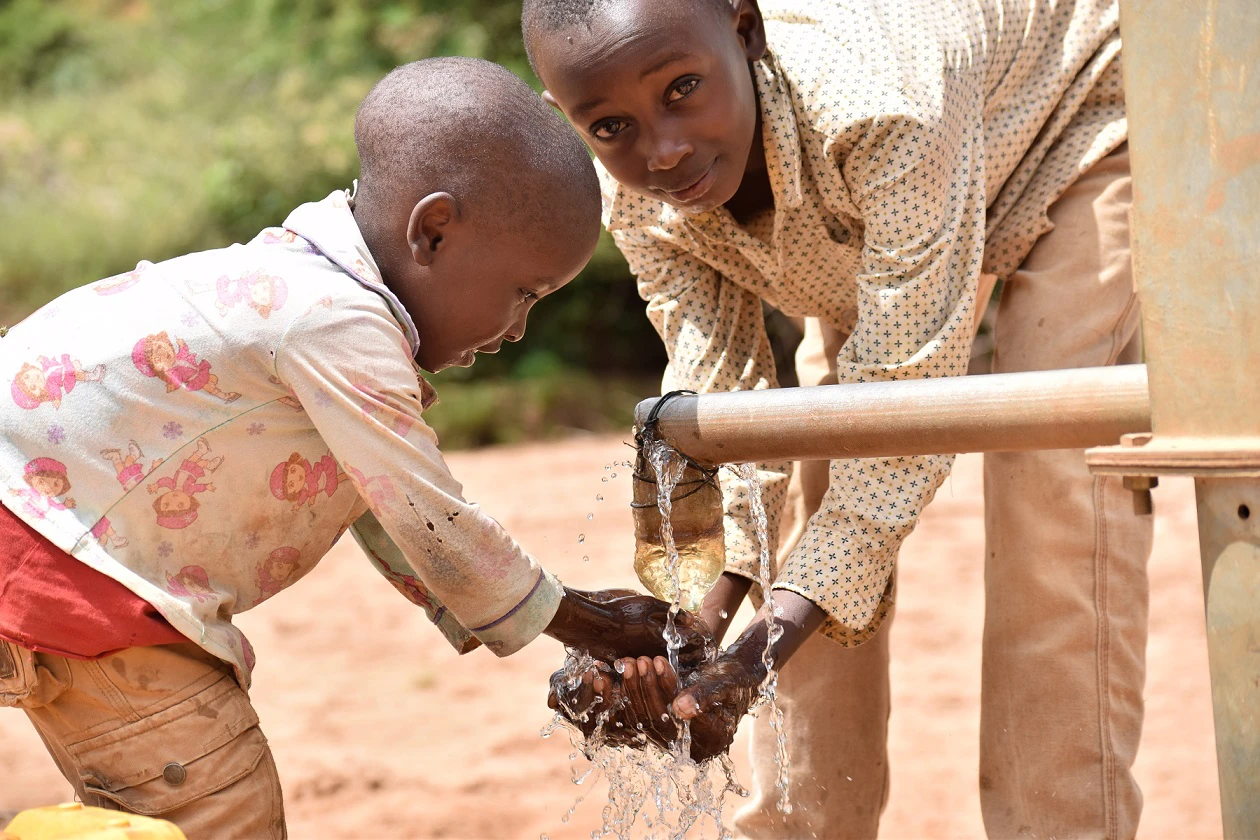Sand Dams Worldwide supports some of the world’s poorest communities to transform their own lives through water and soil conservation in drylands. The charity works with local partners to support rural communities, enabling access to clean water close to homes as well as investing in sustainable agriculture. Water scarcity is increasingly affecting millions of people and wildlife every year.
In many dryland areas, a changing climate is causing desertification, leading to water and food insecurity, conflict between people and wildlife, displacement, and loss of biodiversity. Drylands comprise over 40 per cent of the world’s land surface and are home to 2.3 billion people (including 74 per cent of the world’s poorest people). The status of wildlife species in drylands remains largely uncertain. Capturing water where it falls is essential for improving the environment as well as livelihoods. Sand dams, which last for upwards of 60 years, are an effective and inexpensive way of doing this.
A sand dam is a reinforced concrete wall built across a seasonal riverbed. Each sand dam is built using local effort and materials with only the expertise, cement, specialized materials and tools being provided by Sand Dams Worldwide and their local partners. Ongoing training, including the use of climate-smart agriculture techniques (such as the provision of suitable seeds), is then implemented for up to five years post-build. Following strategic geological analysis, it takes just a few weeks to build each dam. The whole process is cost-effective and focused, involving local communities themselves, meaning that money, supplied materials and knowledge, are used to the utmost effect.
Highlights of Sand Dams Worldwide's work
"Sand dams have far-reaching benefits, not only providing a vital source of water for drinking and domestic use but in transforming local environments."
During the rainy seasons, sand and water are captured behind the wall. Just like a sponge, the water infiltrates into the trapped sand and provides a reservoir from which water can be taken through pipes in the concrete wall or a well sunk into the sand. A sand dam can store up to 40 million litres of water, enough for over 1,000 people. The sand protects water from evaporation and contamination thereby reducing the risk of disease.
Sand dams have other far-reaching benefits, not only providing a vital source of water for drinking and domestic use but also transforming local environments. They allow communities to establish more sustainable forms of agriculture such as tree planting, forming seed banks, introducing micro-horticulture, and adopting drought-resistant varieties. Cropping becomes possible or is greatly improved and diversified; diet is enhanced and household incomes are increased. The sand dams are built close to homes, reducing the amount of time women and children spend collecting water, therefore improving livelihoods and educational prospects as well as safety.
Since 2002, Sand Dams Worldwide (previously named Excellent Development) has supported rural communities in Kenya, Mozambique, Zimbabwe, Ethiopia, Malawi, Eswatini, Sudan, Chad, Tanzania and India. More than 1200 sand dams have been built, bringing year-round water to over one million people within a short distance of their homes. Furthermore, over one million trees have also been planted and 1.9 million metres of terracing have been dug; helping to counter desertification by reducing run-off and soil erosion, and encouraging maximum water absorption into the land.
Sand Dams Worldwide’s strategy to 2025 is to benefit more communities and wildlife with the construction of sand dams, with a particular emphasis on directly supporting other organisations to build 100 sand dams every year by 2025 and influencing the implementation of one million sand dams for half a billion people by 2050.

How can you engage with Sand Dams Worldwide?
The charity has a waiting list of communities that would like to develop their own sand dams through community Self-Help Groups. It costs approximately $30-55k to build a sand dam (depending on the unique geology of the site) including the necessary geological surveys and building materials, training the community on sustainable farming techniques and providing seed banks and tree saplings. If you would like to fund an entire sand dam your donation would be allocated to a specific community Self-Help Group. We can then tailor your next safari to visit the completed sand dam and see the transformation you have funded in person, or get hands-on and form an expedition group to help during the construction phase.
Sand Dams Worldwide recent achievements in dryland communities:
- Enabled Self-Help Groups in southeast Kenya to build 40 sand dams, providing these communities with a year-round source of clean water for life.
- Enabled communities in southeast Kenya to dig over 27,000 metres of terracing and plant over 28,000 trees, both important soil and water conservation techniques. Trees also provide a source of food, fodder, firewood and medicine.
- Continued their programme in Ethiopia, which saw an additional sand dam constructed in South Omo Zone. Delivered a workshop in partnership with local partner, Action for Development, bringing together other international and Ethiopian NGOs as well as local government, to help raise awareness and share best practices about sand dams as a rural water solution and climate adaptation techniques.
- Completed their pilot programme in Malawi, which saw a total of three sand dams built. Communities here were also supported to implement a range of environmental protection measures and sustainable farming techniques, helping to increase farmers’ resilience and ensure long-term food security.
The first of 4 pilot sand dams has been completed in Tanzania, providing a community with year-round clean water. - Enabled the construction of 2 sand dams in Mozambique, where sand dams are being piloted as a rural water solution for communities in Manica province.
- Completed a toolkit of training resources to support partners and organisations with siting, designing and constructing sand dams.
Ready to take the road less travelled?








